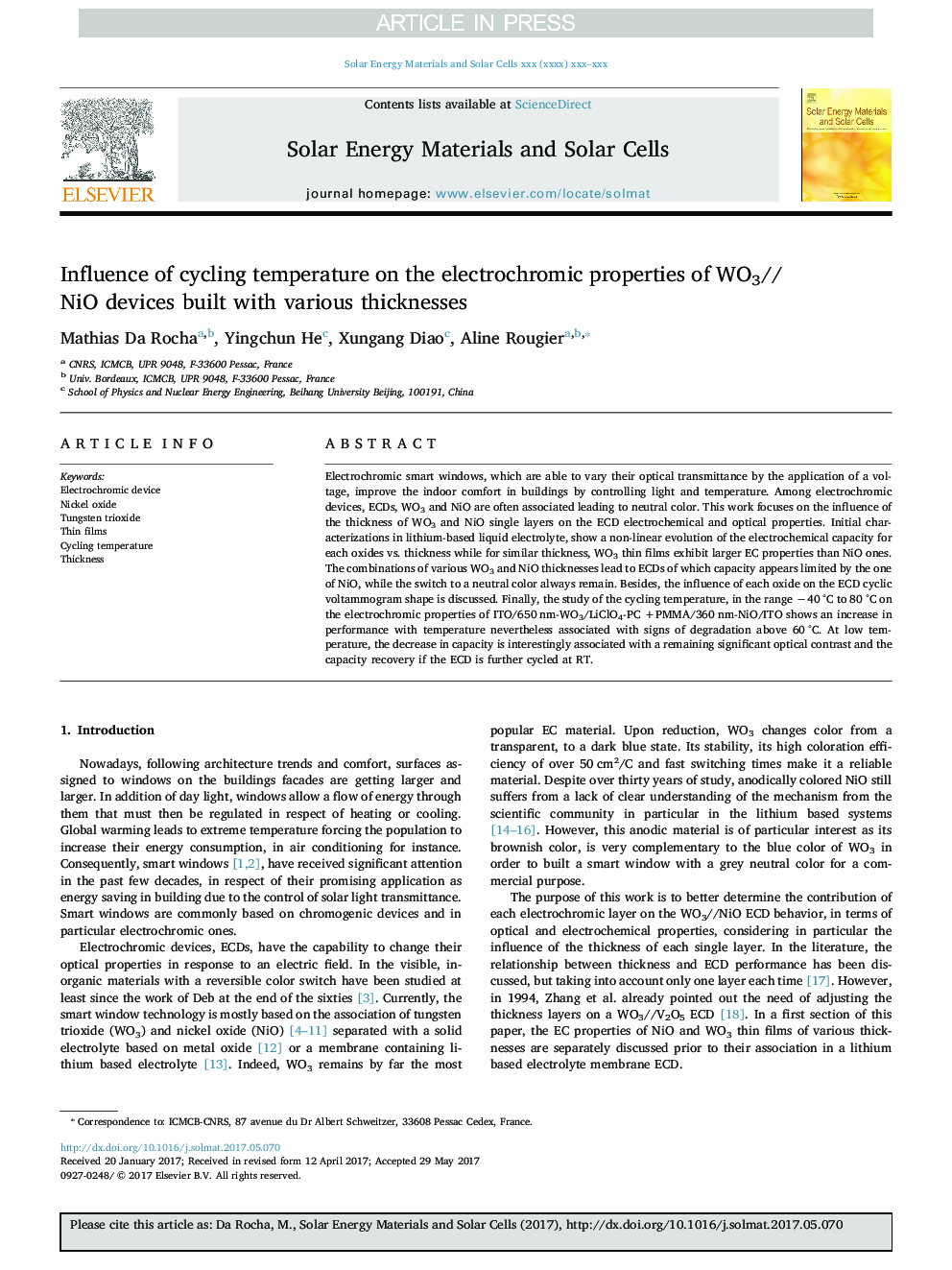| Article ID | Journal | Published Year | Pages | File Type |
|---|---|---|---|---|
| 6534395 | Solar Energy Materials and Solar Cells | 2018 | 9 Pages |
Abstract
Electrochromic smart windows, which are able to vary their optical transmittance by the application of a voltage, improve the indoor comfort in buildings by controlling light and temperature. Among electrochromic devices, ECDs, WO3 and NiO are often associated leading to neutral color. This work focuses on the influence of the thickness of WO3 and NiO single layers on the ECD electrochemical and optical properties. Initial characterizations in lithium-based liquid electrolyte, show a non-linear evolution of the electrochemical capacity for each oxides vs. thickness while for similar thickness, WO3 thin films exhibit larger EC properties than NiO ones. The combinations of various WO3 and NiO thicknesses lead to ECDs of which capacity appears limited by the one of NiO, while the switch to a neutral color always remain. Besides, the influence of each oxide on the ECD cyclic voltammogram shape is discussed. Finally, the study of the cycling temperature, in the range â40 °C to 80 °C on the electrochromic properties of ITO/650 nm-WO3/LiClO4-PC +PMMA/360 nm-NiO/ITO shows an increase in performance with temperature nevertheless associated with signs of degradation above 60 °C. At low temperature, the decrease in capacity is interestingly associated with a remaining significant optical contrast and the capacity recovery if the ECD is further cycled at RT.
Related Topics
Physical Sciences and Engineering
Chemical Engineering
Catalysis
Authors
Mathias Da Rocha, Yingchun He, Xungang Diao, Aline Rougier,
